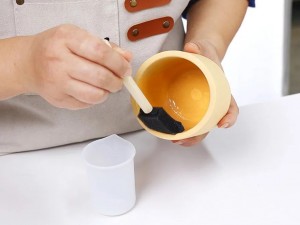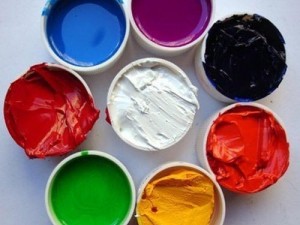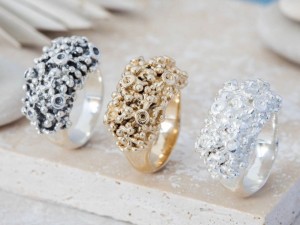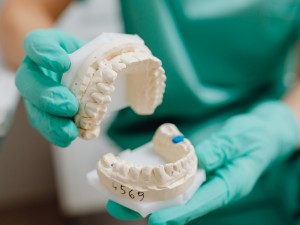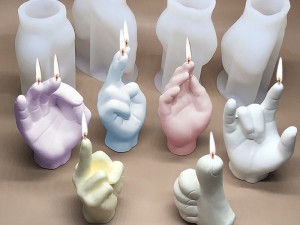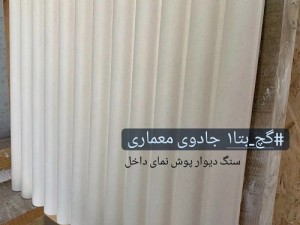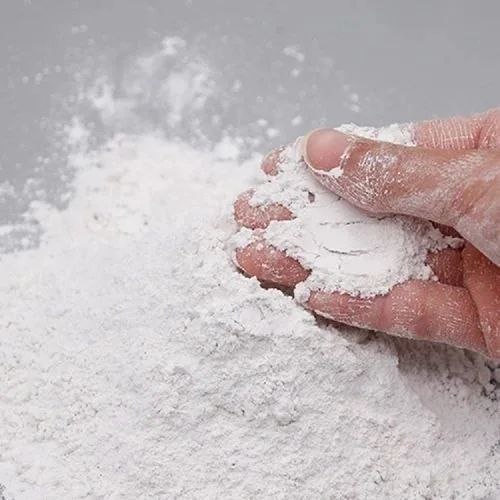
ویژگیهای گچ نسوز ریخته گری
گچ نسوز ریختهگری (Refractory Gypsum for Casting) نوعی گچ ویژه است که در صنایع ریختهگری، بهویژه در ساخت قالبهای دقیق برای فلزات غیرآهنی مانند آلومینیوم، مس و روی استفاده میشود. این گچ ترکیبی از گچ پاریس (کلسیم سولفات نیمههیدرات) و مواد نسوز مانند سیلیس، آلومینا یا سایر افزودنیهای مقاوم به دما است تا بتواند در برابر حرارت بالا و تنشهای ناشی از ریختهگری مقاومت کند.
ویژگیهای گچ نسوز ریختهگری:
1. مقاومت حرارتی بالا: تحمل دماهای تا حدود ۱۲۰۰-۱۰۰۰ درجه سانتیگراد بسته به ترکیب.
2. انبساط حرارتی کنترلشده: جلوگیری از ترکخوردگی قالب در اثر گرمایش.
3. پایداری ابعادی: حفظ دقت ابعادی قالب در طول فرآیند ریختهگری.
4. نفوذپذیری گاز: امکان خروج گازهای حاصل از ذوب فلز از قالب.
5. سطح صاف و دقیق: مناسب برای تولید قطعات با جزئیات ظریف.
کاربردها:
- ریختهگری دقیق (Investment Casting) برای قطعات هنری، صنعتی و جواهرسازی.
- قالبسازی برای فلزات با نقطه ذوب پایینتر (آلومینیوم، برنج، مس).
- ساخت نمونههای سریع (Rapid Prototyping) در صنایع خودروسازی و هوافضا.
مزایا نسبت به قالبهای ماسهای:
- کیفیت سطح بهتر برای قطعات نهایی.
- دقت ابعادی بالاتر.
- امکان تولید اشکال پیچیده با جزئیات ریز.
معایب:
- هزینه بالاتر نسبت به قالبهای ماسهای معمولی.
- محدودیت در استفاده برای فلزات با نقطه ذوب بسیار بالا (مثل فولاد).
نکات مهم در استفاده:
- نسبت اختلاط آب و گچ باید دقیق باشد تا از تخلخل و استحکام مناسب اطمینان حاصل شود.
- قالبهای گچی معمولاً پس از یک بار استفاده تخریب میشوند (قالبهای یکبارمصرف).
- پیش از ریختن فلز مذاب، قالب باید بهطور کامل خشک و پخته شود تا رطوبت باقیمانده باعث ایجاد عیب در قطعه نشود.

جدول فنی گچ نسوز ریختهگری (Refractory Casting Gypsum)
پارامتر مقدار/توضیحات واحد/شرایط تست
--------------------------------------------------------------------------------------------------------
ترکیب اصلی کلسیم سولفات نیمههیدرات (CaSO₄·۰.۵H₂O) + افزودنیهای نسوز (سیلیس، آلومینا)
نسبت اختلاط با آب ۱ قسمت گچ به ۰.۶-۰.۸ قسمت آب وزنی (Water/Powder Ratio)
زمان گیرش اولیه ۱۰-۲۰ دقیقه دمای محیط (۲۵°C)
زمان گیرش نهایی ۳۰-۶۰ دقیقه دمای محیط (۲۵°C)
مقاومت فشاری ۱۰-۲۰ مگاپاسکال (پس از خشک شدن کامل) MPa (طبق استاندارد ASTM)
مقاومت حرارتی تا ۱۲۰۰°C (بسته به فرمولاسیون) °C
انبساط حرارتی ۰.۱-۰.۳% (در دمای ۱۰۰۰°C) %
چگالی خشک ۱.۲-۱.۶ گرم بر سانتیمتر مکعب g/cm³
نفوذپذیری گاز متوسط تا بالا (بستگی به تخلخل دارد) -
دمای پخت قالب ۲۰۰-۳۰۰°C (برای حذف رطوبت) °C (۲-۴ ساعت)
حداکثر دمای ریختهگری ۸۰۰-۱۱۰۰°C (برای فلزات غیرآهنی) °C
رنگ پودر سفید تا خاکستری روشن -
اندازه ذرات ۱۰۰-۲۰۰ مش (بسته به نوع محصول) µm
کاربردهای متداول ریختهگری آلومینیوم، مس، روی، قطعات هنری
Casting refractory plaster involves creating molds or shapes that can withstand high temperatures, making it ideal for foundry work, ceramics, metal casting, and furnace linings. Here’s a step-by-step guide to casting refractory plaster :
Materials Needed:
1. Refractory plaster (e.g., Pottery Plaster, Hydrocal, or specialized refractory mixes like Castable Cement or Kaolin-based plasters).
2. Water (distilled or clean tap water).
3. Mold materials (silicone, wood, plastic, or metal molds).
4. Mixing container (plastic or stainless steel bucket).
5. Stirring tool (paddle mixer or sturdy spatula).
6. Release agent (petroleum jelly, mold soap, or commercial release spray).
7. Vibrating table or tapping method** (to remove air bubbles).
8. Measuring scale (for precise water-to-plaster ratio).
9. Safety gear (gloves, mask, goggles – plaster dust can be harmful).

Steps for Casting Refractory Plaster:
1. Prepare the Mold:
- Ensure the mold is clean and dry.
- Apply a release agent (if needed) to prevent sticking.
- Seal any gaps or seams to avoid leaks.
2. Measure the Plaster and Water:
- Follow the manufacturer’s recommended **water-to-plaster ratio** (typically **1:1 to 2:3 by weight**).
- Example: For **Pottery Plaster #1**, use **70 parts water to 100 parts plaster**.
- Always add plaster to water (not the reverse) to prevent clumping.
3. Mix the Plaster:
1. Pour water into the mixing container.
2. Gradually sift plaster into the water while stirring gently.
3. Mix thoroughly until smooth (consistency of pancake batter).
4. Avoid whipping to prevent excessive air bubbles.
4. Pour the Mixture:
- Pour the plaster into the mold slowly to minimize air entrapment.
- Tap or vibrate the mold to release trapped air bubbles.
- Overfill slightly if needed, then level with a straight edge.
5. Cure the Casting:
- Let the plaster set (initial set time: 20–30 minutes, full cure: 24–48 hours).
- Avoid moving or disturbing the mold during curing.
- Demold once fully hardened (check manufacturer’s guidelines).
6. Dry and Fire (If Needed):
- Air-dry the casting for 24–48 hours before high-temperature use.
- For refractory applications (e.g., kiln linings), **slowly fire** the plaster to **remove moisture** and strengthen it.
Tips for Success:
- Work quickly – refractory plaster sets faster than regular plaster.
- Control thickness – thick sections may crack during drying; consider reinforcement (e.g., fiberglass or perlite).
- Test small batches – some refractory plasters require additives (e.g., fire clay, silica sand) for extra heat resistance.
- Ventilation – wear a mask when handling dry plaster to avoid inhalation.
Common Refractory Plaster Types:
1. Pottery Plaster (#1 or #30) – Good for molds up to 1200°C (2192°F).
2. Hydrocal – Stronger than pottery plaster, but lower heat resistance.
3. Castable Refractory Cement – Withstands 1400°C+ (2552°F+); contains alumina/silica.
4. Kaolin-Based Plaster – Used for high-temperature ceramic shells.

